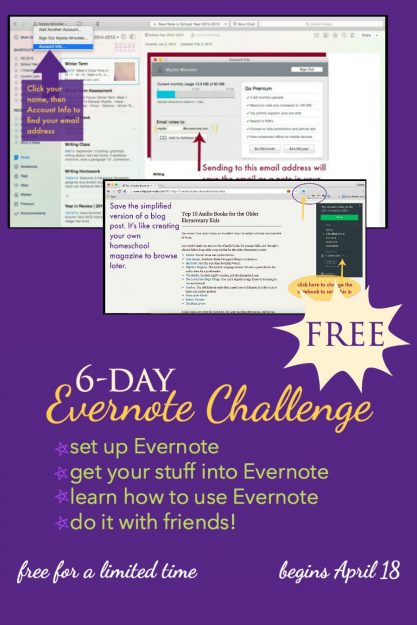…is where I’ve been. Literally, kind of: May & June allergy season kicked off a pretty brutal adventure with asthma—same as every year, but worse this time. Last week the doctor changed up my asthma & allergy meds and I’m much improved. Still coughing but the shortness of breath & crushing fatigue are diminishing. I can wipe down the kitchen or take a shower without getting winded, which is huge.
I’ve been keeping up with my client work, but my own writing bore the brunt of the fatigue. Creative battery totally drained. This week, as I begin to feel lots better, I’m working to reset my creative practice and good habits. Taking it slow, though!
I’ve been dialed waaaay back on social media, too—which is a good thing? But this blog fell silent too, and I’ve missed capturing thoughts and adventures here. And I’m aching to be back in a fertile groove with my book.
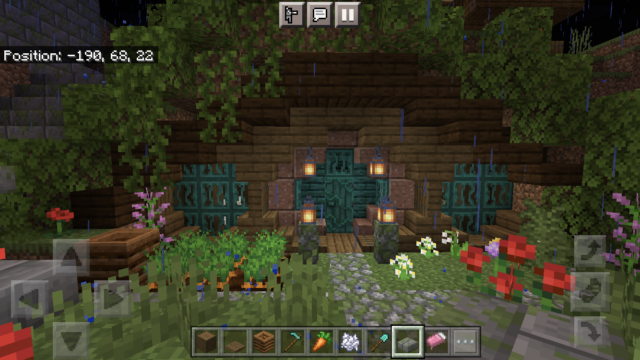
So much for what I haven’t done; how about what I have?
—Lots of Minecraft, with kids and without. We have a Realm where we can all play together and I had fun building a whole village of medieval-style houses for us to live in. In my own world, I’ve got a pretty little Hobbiton going. Mellow and satisfying, and certainly creative in its way.
—Read Building a Second Brain by Tiago Forte. I’ve followed his blog for ages and I really like his “CODE” process (Capture, Organize, Distill, Express) for navigating all the reading I do constantly, on many fronts, and finding connections and throughlines in the ideas I’ve captured, and writing about them to assimilate and synthesize that knowledge. Basically it’s a name for what I did on this blog in its first twelve years—gathered thoughts about my reading, noted connections, worked out my ideas about whatever topics were gripping me. Somewhere along the line I shifted to doing that work more on paper than on the blog—also a nourishing practice but it eradicated some vital steps in the Organize, Distill, and Express parts of the process. It’s so hard to find anything I jotted down in one of the dozens of paper notebooks I’ve filled over the years. Which makes distilling the ideas difficult, which makes expressing them a longer and less serendipitous process. So my big takeaway from Forte’s book was to:
—Revisit the ways I’m capturing information and ideas. I’ve used Evernote for at least a decade, for stashing away everything of interest I encounter on the internet. So this past month, I tidied up my notebooks and reorganized with Forte’s Second Brain (digital brain) “PARA” structure in mind: Projects, Areas of Interest, Resources, Archive. Now, personally I find a lot of overlap between Areas and Resources, so my system is different from Forte’s. Which tweaking he encourages, of course! But if your Capture tool has a robust search engine (and Evernote has one of the best), how you organize your notes is of less importance, because you can always surface what you need via search.
—Of course I’m still writing in notebooks. Pen and paper does spark a different kind of fertile, creative thought. So I’m making it a practice to read over my scribbles at least weekly and move anything of use or interest into Evernote. Sometimes I type things up (a helpful practice for zero drafts of poems) and other times I just take a picture. Evernote’s search can even deal with handwriting! This practice is another way of leaning into the “Second Brain” concept—recognizing that we live in an information-overload age and it isn’t possible to hold it all in one’s own (first) brain anymore. There’s a lot of peace in trusting you’ll find what you need in your archive. And, I mean, so many of us homeschooling blogger types experienced the magic of the Distill and Express parts of the process in the enthusiastic discourse that led to such good writing & experiences in those days.
—Even in my fatigued state, the thrill I get from trying out a new app or platform has been as intense as ever. Over the past year or two, I’ve tested lots of notetaking and project-planning apps (a slew of Capture tools, basically). Notion, Roam Research, Logseq, Mem, Sunsuma—these are all excellent projects with unique structures and uses. You’ll find diehard fans of each one. In the end, though (ha—there is never a true end to this experimentation), I determined that Evernote makes the most sense for me. I like its looks, its functionality, and its amazing integration. For task tracking and timeblocking, I use Todoist, and I’ve been really happy with my setup there for a long time. The other two apps I lean on constantly, with gratitude for the role they play, are Readwise and Momentum Dash. The former catches all my Kindle highlights, article quotes, and any passages I’ve marked in print books & sent (via photo) to the app; and it sends all these juicy bits of good stuff to Evernote where I can…search them whenever I want. And Momentum Dash is a nice focusing element in my browser. When you open a new tab, you get a nice clean screen with a beautiful photo—no Google distractions. You can add habit tracking across the top if you wish, plus other tidbits like the weather. And you can customize tab sets to make it easier to stay focused on a particular type of work. For example, I have one set that opens all the tabs I need to do my social media job for Low Bar Chorale. Another one opens only what I need for daily planning. It’s an elegant little browser extension that went a long way toward cutting down drifting and getting sucked into feeds, or having Twitter open all day.
(P.S. That Todoist link is an affiliate link—I rely on the app so much I signed up for their referral program. If you’re interested in how I use it to keep track of homeschooling, housework, medical admin, client work, and creative projects, I’m happy to rave about my system anytime.)
—Since May, I’ve written the first three (!) Brave Writer Darts of the current year’s lineup. Am at work on the fourth, for Pam Muñoz Ryan’s lovely novel Solimar, now.
—I’ve worked a little bit on a long-term project to create a resource for Oregon families with a kid making the shift from child disability services to adult services. I documented the almost-a-year-long process we navigated for my son, and I was stunned to discover the road map/timeline/checklist I yearned for doesn’t exist. So I’m making one to share. Slow but steady progress.
—As for stitching, I’ve mostly been mending socks and jeans. My embroidery projects have been on idle.
—And (since this got long!) one last thing I’ve been reading and enjoying immensely: A. R. Moxon’s post series called “Unpacking LOST.“ I’m a major LOST fan, have watched the whole run at least six times, plus twice more chronologically. Moxon’s take on the show is brilliant and riveting, and each time a new installment drops, it makes my day.
Hope summer is treating you well, friends. Let’s catch up!
This morning I’m trying something new.
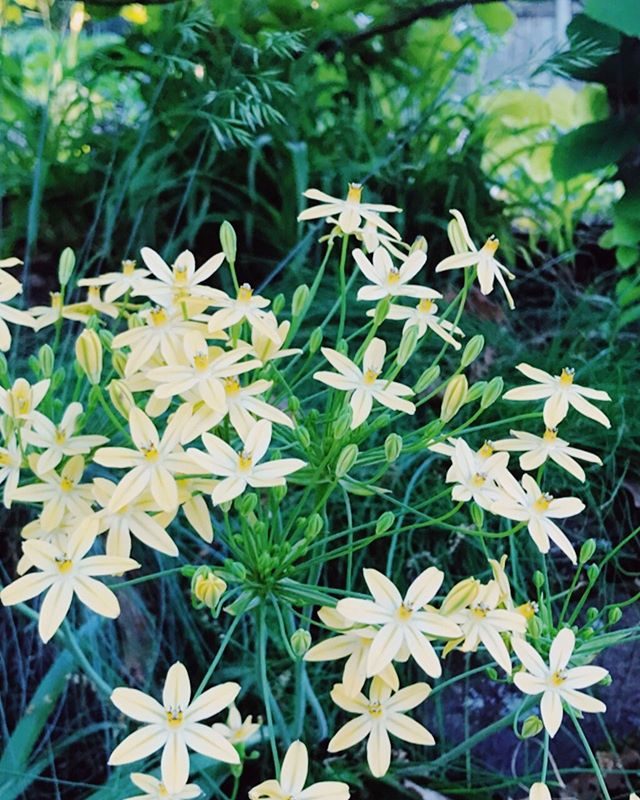
I noticed that this week’s morning poetry-reading-and-writing-time kept getting interrupted (the writing part, at least) by scritchy angsting over my daily schedule—how to fit it all in, “it” being homeschooling and house-tending and paying work and personal projects and long walks and gardening and reading and TV and doctor appointments and fun time and down time and sleep—oh, the days are so wonderfully, terribly full. When it hit me that I kept returning to logistical questions during the precious minutes I give myself for freewriting, I realized my brain was trying to tell me something. So I leaned into the questions instead of impatiently shooing them away.
I know I try to fit too much in. But there are ways it works, if I’m thoughtful and honest with myself. (For example: no matter how many times I tell myself I’m going to read in bed, I know I’ll just fall asleep within a paragraph or two and I need to give myself some other space during the day for real reading.)
This morning’s insight was that no matter how often I write an after-dinner blogging interval into my schedule, I won’t use it for blogging. Especially now, when the long evening light is amazing and my feet carry me out the door almost before my mind realizes what’s happening.
Or yesterday, when I said: I’ll blog between lunch and work. Naturally, this meant I went out to the garden to prune and weed and rhapsodize over this week’s wave of bloom. (Poppies, pincushion flower, snapdragons, begonia; and the yarrow is about to explode with color.)
So today I’m trying in the morning. Mornings might work—the loose half-hour between my poetry time and high tide. I suppose it’s another step in my shift toward digital minimalism. After I took Facebook and Twitter off my phone in early April, I gave them small containers at breakfast. I’m going to try a week of stealing those containers for Bonny Glen. I’m documenting the plan so I’ll (obliger that I am) be more likely to give it a fair shot.
I need this blog! Its archives are our family chronicle and a source of great joy. (Scott’s too. His “fambly” posts capture so many moments I wouldn’t have remembered, or wasn’t present for in the first place. And so hilariously.) And—as any Charlotte Mason educator worth her salt knows—retelling an event helps fix it in your memory. Earlier this week, a doctor was asking me about developmental milestones one of the kids. After six babies and so many years, there’s no chance I’d remember those specifics organically. But I remembered a blog post—and where I was sitting when I wrote it—and that gave me an approximate window of time.
(There’s something there worth exploring: the way the physical act of writing—where I’m sitting, what’s out the window, whether there even IS a window—becomes as much a part of memory as the words themselves.)
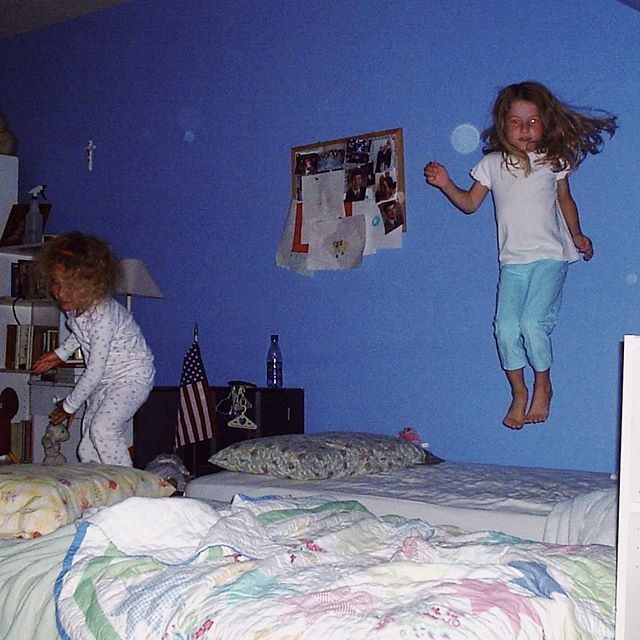
This is my thinking-aloud space, and heaven knows I’m thinking aloud right now. But I think they are thoughts relevant to others, because we’re all trying to squeeze too much magic into too little time. I know I can’t fit in everything. I also know I won’t fit in a lot of things unless I think through where to fit them. These past two years, with such a comically full plate (even for me, greedy plate-filler that I am), I had to make a concerted effort to save space for sleep, walks, and down time.
And I make a mental distinction between my kinds of work—I think of it as paying work and creative work, but those labels are clumsy because all my ‘paying work’ is creative, and of course I hope all my ‘creative work’ will earn its keep eventually. The distinction is more like: short-term, pays soon and long-term, pays someday or maybe never. Dividing it that way helped a lot! Without blocks in my schedule for the long-term personal projects, I would never get around to them. Calling those blocks “creative work” in my planner helps set the tone and mood I want when I sit down to that work—it sounds exciting and rich, not like a slog. And the “paying work” label is a good motivator too, because it says: these hours pay next month’s bills. Tangible, concrete.
Speaking of my planner, another big shift I made in April was—gulp—abandoning my beloved bullet journal for Evernote. This happened for a quite practical reason: I had gotten sloppy about maintaining the index that makes it possible to pull notes out of a bullet journal at a later date. After so many years, I have a giant bin of filled notebooks. If I need notes on a particular event or phone call (the insurance company, a doctor, an editor), I have to hunt through all those books. Even with the properly indexed ones, this is a pain!
And (again out of a fierce urge to save my time for good things) I realized that if I do the same kind of task-logging and note-taking in Evernote that I’ve been doing in my notebook, I can quickly, easily search for a note.
After a few weeks, I developed a template so I didn’t have to recreate the wheel every morning. I read this article about “interstitial journaling”—the practice of taking a few moments to write narratively about the task you’ve just completed and what you’re about to embark on next, including feelings or trepidations about it—and boom: this made so much sense to me, and after two months I can say it’s a practice that works really, really well for keeping me focused.
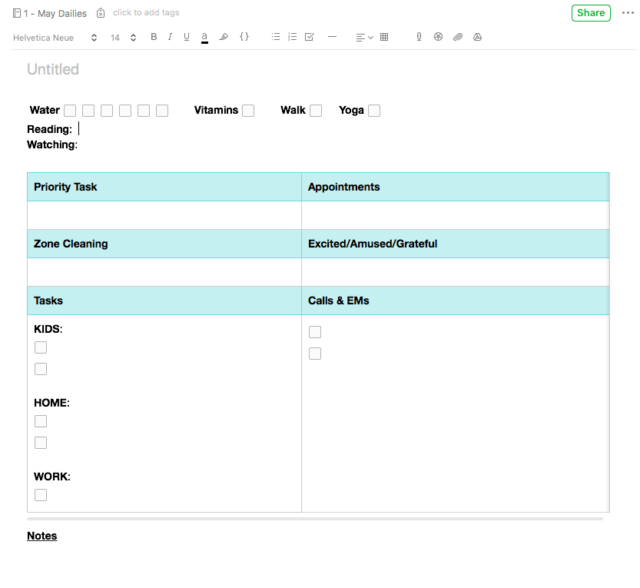
I title each note with the day and date: “Wednesday, May 22.” The “Notes” section is where my time-stamped interstitial journaling entries go. By the end of the day, there’s a full page of notes. This section has become the most important part! Turns my focus up to eleven.
I still use a paper notebook for my morning poetry pages. And lots of other things throughout the day—I’m an inveterate doodler. If I take notes on paper, now I simply snap a photo of them and save it in Evernote with a couple of tags to help me find it later.
I’m working on a longer post for Medium about this transition to Evernote. It’s funny that it grew out of digital decluttering! But interstitial journaling has been a brilliant tool for me so far, and Evernote (which I’ve used forever for various kinds of digital notekeeping) is a handy place to do it.
Right now, though, I’ve reached the end of this morning’s experimental blogging container. See you tomorrow, friends!

Really really really good tips in the Mystie Winckler book Pamela Barnhill recommends here, gang. I thought I was already using Evernote & Google Calendar efficiently, but I picked up some useful new ideas (including better integrating my systems) in the book. Which is 30% off with the code in Pam’s post. So, like, under $3.
In Paperless Home Organization, Mystie Winckler leads you through the process of using digital applications to build your very own paperless system. She walks you step-by-step through how to use four free apps to digitally store the same information you would normally keep in a home management binder.
Which means if you have a smartphone, or an iPod Touch, or any tablet, then your binder no longer sits cluttering up your counter, but in your hand — at the doctor’s office, the bookstore, even at your school room table.
I’d been meaning to try Remember the Milk—my pal Ron raves about it, and he doesn’t rave lightly—and Pam’s post, and Mystie’s book, nudged me to take the plunge. Last year I relied on TeuxDeux for daily task management, but my free trial period ran out and I decided I wasn’t enough in love with it to pay for it. It’s a really gorgeous, clean layout but too hard to go back to past days. Remember the Milk isn’t quite as visually appealing (its web app, that is; on my phone it’s quite nice) but it is so much more flexible and functional. Thanks to Paperless Home Organization, I’ve now got it talking to my Gmail account (my RTM to-do list pops up in my inbox sidebar) and WOW, this is just right for the way mah brain works.
As for Evernote, I rely on it for everything. Or so I thought. Now I see all sorts of new bits of recordkeeping I can shift over there. Very pleased.





